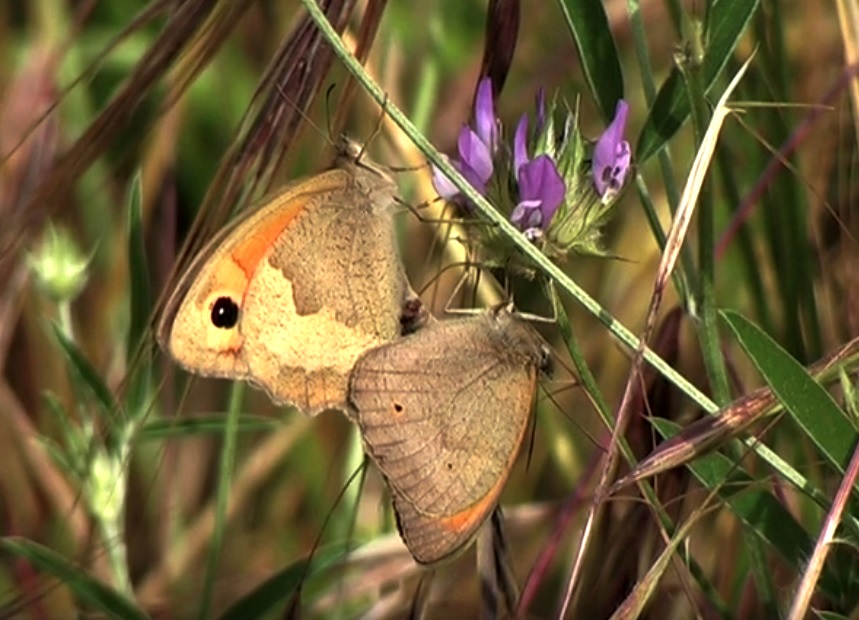

The Meadow Brown (Maniola jurtina)
The Meadow Brown (Maniola jurtina Linnaeus, 1758) belongs to the family Nymphalidae, and subfamily Satyrinae. In France, the Meadow Brown is one of the commonest and most widespread species and flies in Provence in one generation, from the beginning of May to the end of October. Most of the Meadow Brown males die in early summer, while females estivate in shaded places and stop all activity, thus avoiding the heat. At the end of summer, females often lay their eggs in recently mown meadows. The female lands in the low vegetation and ejects her eggs into the grass or on the ground, or fixes single eggs on a leaf or stem of grass. The eggs are straw-coloured and when they mature they develop reddish spots.
In the Midi, the incubation of the eggs lasts about 12 days. After its second moult, in late October or early November, the caterpillar hides in the center of a clump of grass to protect itself. It will overwinter there until spring but when the temperature is mild, it rises higher in the clump to feed at night. The mature caterpillar looks for a suitable place to pupate.
It attaches suspended from a stalk of grass and a few days later, becomes pale and turns into a chrysalis. In the first hours, the chrysalis is light green in colour but quickly black streaks appear which gradually darken, thus hiding it perfectly in its natural environment.
